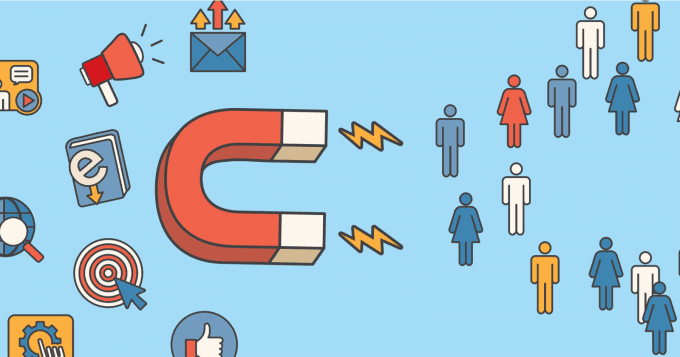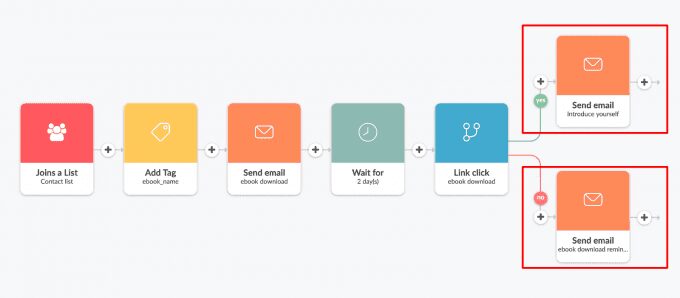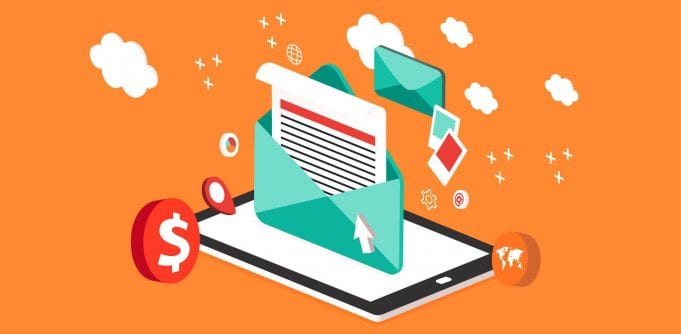Email lists are often viewed as the holy grail of modern small businesses, especially for those who operate primarily online. Building an email list can be challenging and take time, but if done correctly, it can be an incredible way to boost revenue.
When creating an email list for the first time, it’s best to start simple. Focus on capturing data and maintaining data integrity before looking at segmentation and optimization. Here’s how to build your first small business email list.
Get the Right Tools and Goals

To build an active list, you first need to set goals for your list and get the right infrastructure in place. Why is it important that your business captures these emails? Who is the target market that you’re hoping to connect with? These will help drive future decisions that will ultimately encourage your prospects to part with their information.
The tools that drive the process are equally important. Automation plays a significant role in generating income through email lists, as well as keeping things flowing smoothly in a small business with limited resources. In addition to having an automated email marketing program, you’ll want project planning applications and bulk email verification tools. Read more on the top 10 bulk email verification and validation services that were compared by Accuwebhosting.com.
Create a Lead Magnet

People aren’t going to give you their email address for nothing. Your business must provide something that is both relevant to your offering, as well as valuable to your customer, to grow an email list and create an engaged audience effectively. Some common lead magnets include:
- Discount codes
- eBooks
- Checklists
- Coaching calls
- Workbooks
- Webinars
It’s important to outline your email list goals and clarify your audience profile before creating a lead magnet. For your lead magnet to work effectively, you must know what problem your audience is trying to solve and provide a simple solution that gives them a taste of what you can provide over time.
Set Up a Landing Page or Opt-In Form

Landing pages are where your customer is brought when they click a link to sign up for your email list. For example, if you create a lead magnet for an eBook and share it on Pinterest, your lead will be lead to a specific page on your website where they can share their information. Once they submit their email address, the opt-in will be sent to them and you’ll have grown your list.
You can also have various ways to opt-in on your website. While time-triggered pop-up messages used to be the go-to for web marketers, customers are more likely to exit out of them without looking now. Additionally, having something interrupt the customer journey can be disruptive enough that they “bounce” from your page more quickly than they would have otherwise.
Modern marketers are including inline forms and exit pop-ups to incorporate opt-in forms on their page.
Lay Out Your Email Sales Funnel

Once you’ve captured the information you provided, how will you follow up? It’s not enough to have someone on your list; you must also have emails planned that lead to your conversion goals. This should be automated to create a customer-specific flow of information, looking something like this:
- A welcome email introducing yourself and your services immediately following the delivery of the opt-in.
- A follow-up a few days after to see how the lead magnet is working.
- A follow-up a few days following to discuss how these tools help your clients.
- Eventually, a follow-up with a call-to-action asking for a sale.
Some leads in your sales funnel may convert right away, while others could take months of communication to make a purchasing decision. Fortunately, with a strong email list and a well-planned strategy, you’ll have time to wait.
Track the Analytics

Data is exceptionally important when building an email list. It can help you identify how effective your strategy is and give valuable insights into what aspects of your approach should be changed. Some of the key metrics to look at include:
- Open rate
This will likely be the metric you look at the most. The open rate tells you how many of your audience actually opened the email, versus how many left it sitting in their inbox unnoticed. With the right email marketing tools, you can resend the email with a different subject line to those who hadn’t opened the original and boost your overall response.
- Click-through rate
The second most important metric is the click-through rate, which tells you which members of your audience not only opened the email but followed the call-to-action. This will show you how many people were interested enough in what you’re offering to continue reading.
- Time metrics
Time metrics are often overlooked when looking at email marketing analytics, but they can help drive future decision making. Time rates show you at what time of day your audience was most active so that you can alter your send times accordingly.
- Unsubscribes
It’s normal to have some people unsubscribe from your email list over time. If you see a spike in unsubscribes, however, it could be that you made a poor decision with your marketing approach.
- Conversions
To measure conversions, you’ll have to cross-reference your email statistics with your sales statistics. If you see a high number of click-throughs but few sales on the other side, you know that your email marketing strategy is strong, but your sales page needs some work.
Using these metrics to make informed decisions after starting to build your first email list can set you up for success with subsequent lists and campaigns. You can use this information to refine your approach and identify any niche segments that might be interested in specific opportunities down the road.
Don’t hesitate to incorporate A/B testing and revisit your strategy based on your results. Once you become comfortable with your first email list, you can experiment with segmentation and targeted campaigns. For now, focus on getting into a consistent flow and building an engaged audience.










